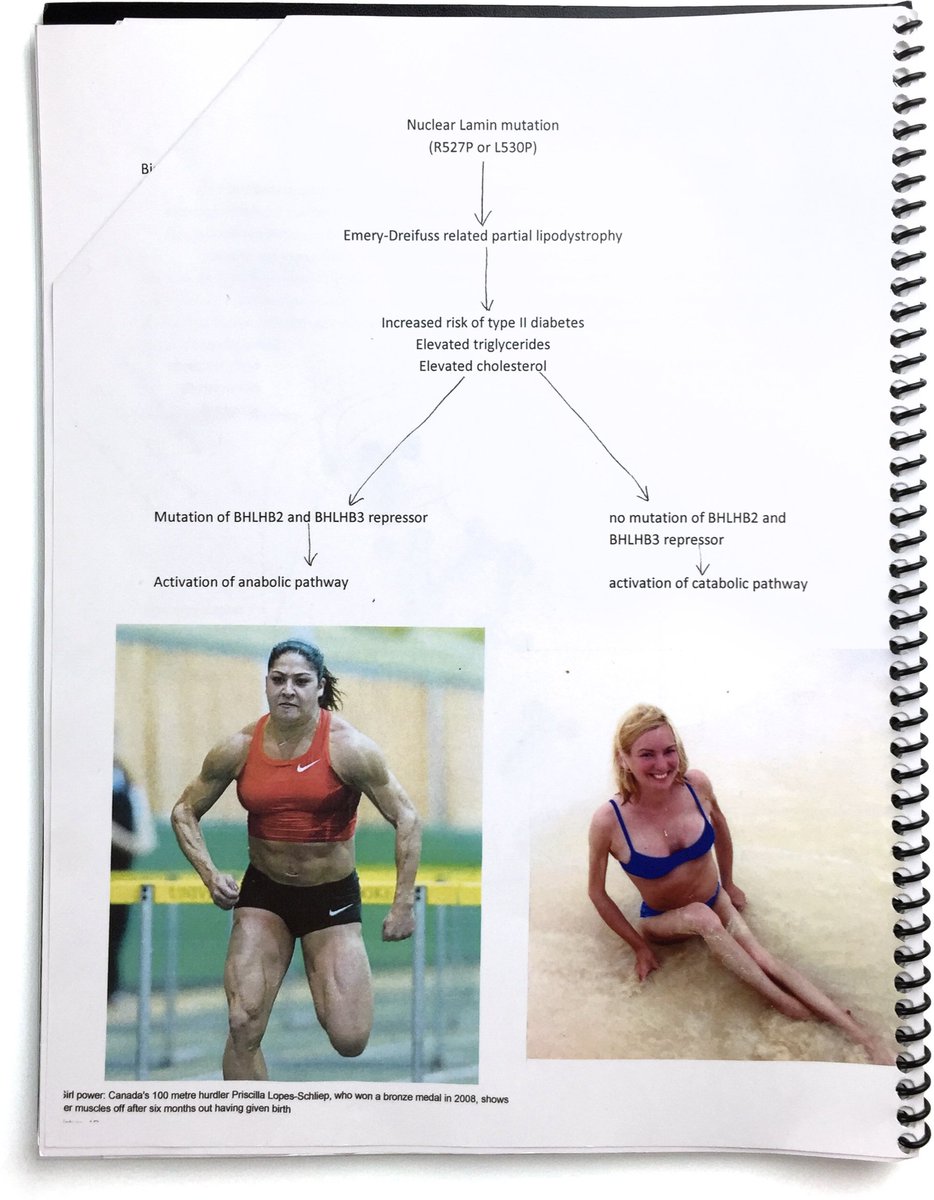New cross-national study finds “nonviolent tactics strongly increase movement support relative to violent tactics & preference for nonviolent resistance is primarily driven by intrinsic commitments to the moral superiority of nonviolence.” 🧵 researchgate.net/profile/Jonath… 

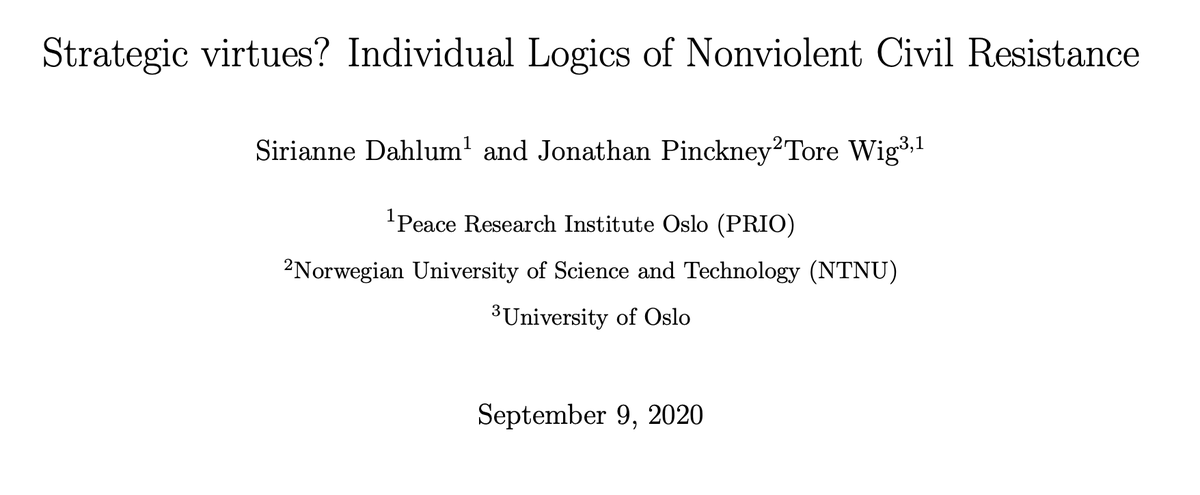
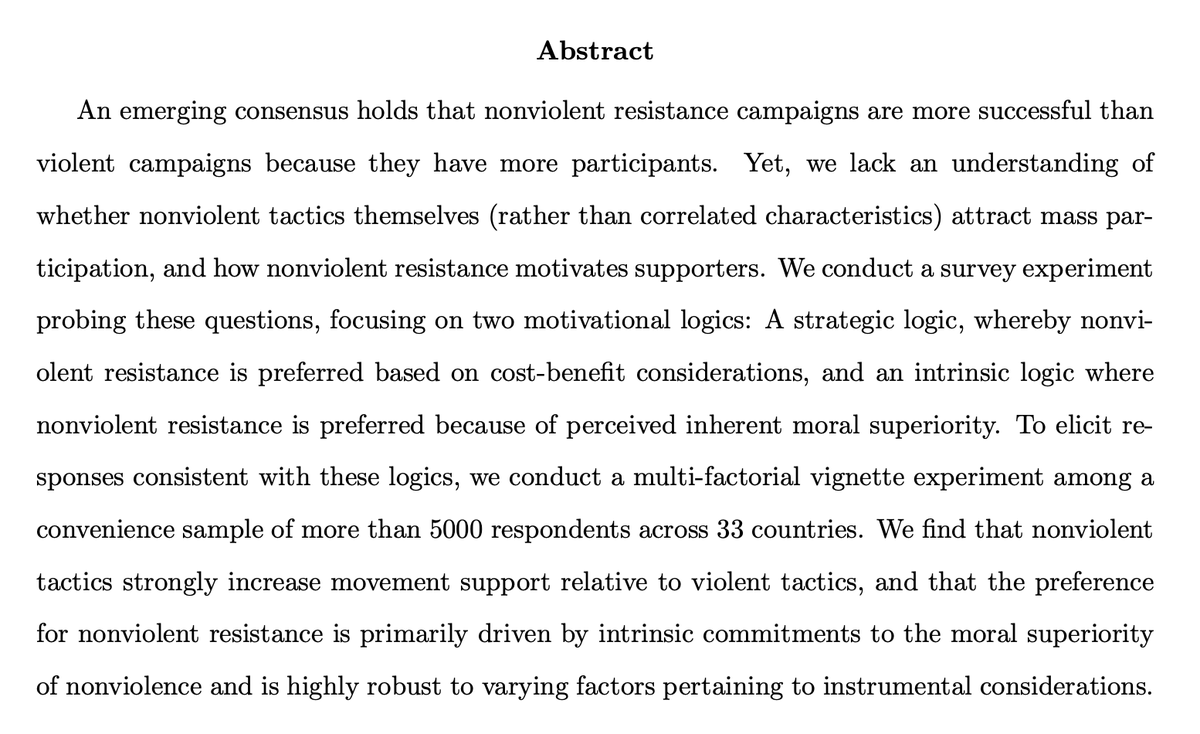
5000 survey participants in 33 countries were presented with “a fictional vignette described as a recent news article about a public demonstration against an autocratic regime.” The vignette randomly varied protester tactics, repression by regime & movement success. 2/ 

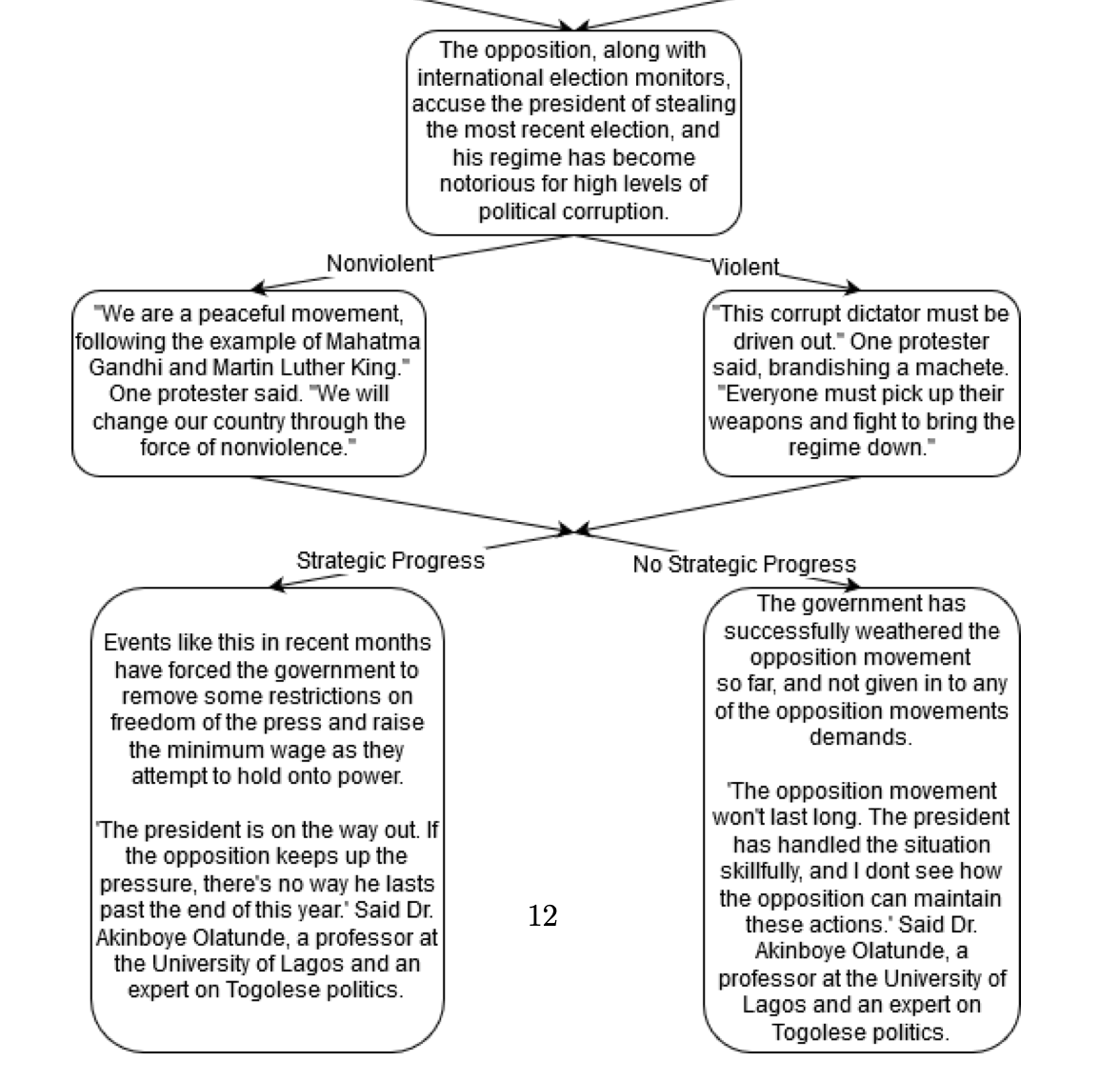
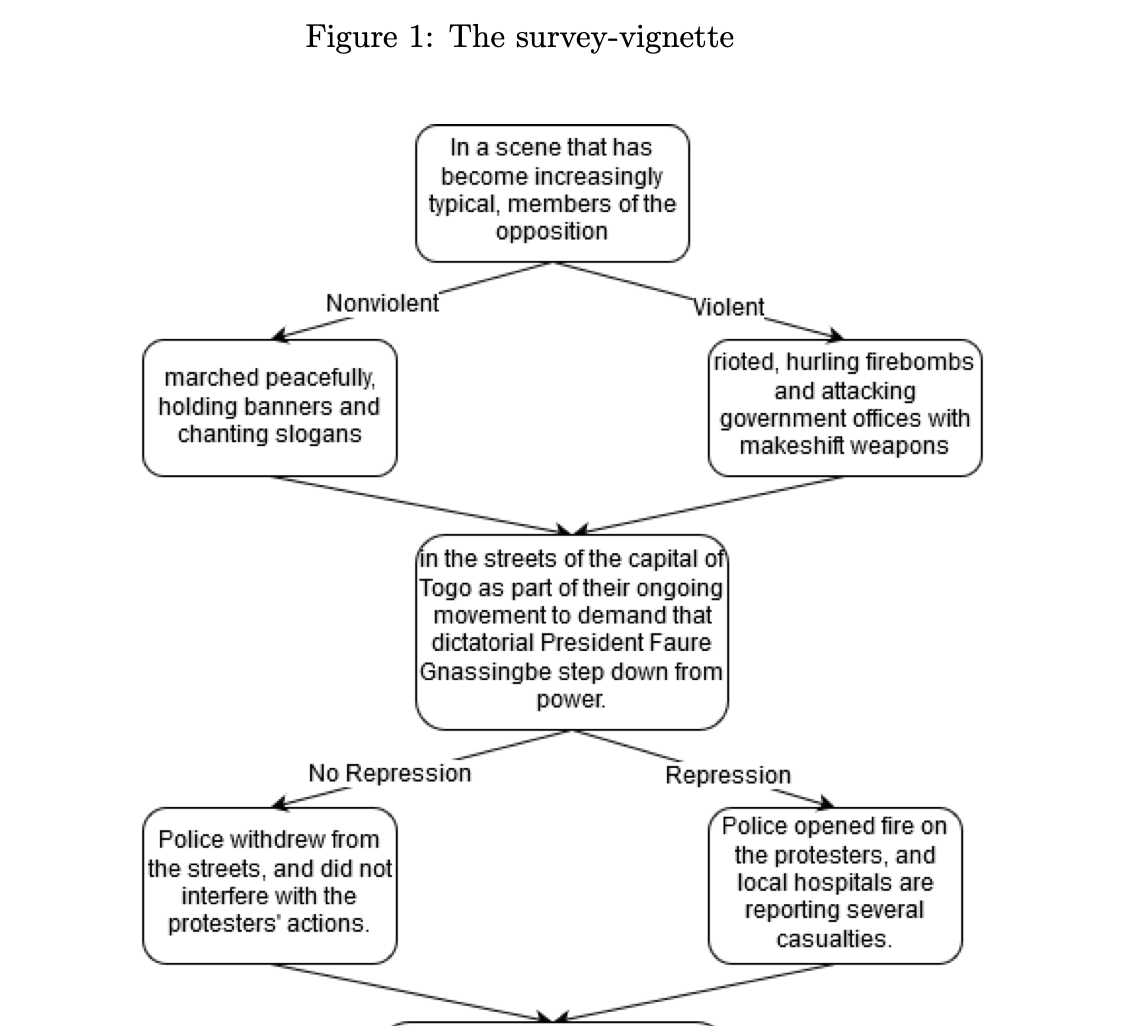
Subjects were then asked would you support the movement? Do you imagine a citizen of that country would support the movement? Do you imagine citizens would join the protests? Would you donate? 3/ 

To get at whether support was motivated more by “intrinsic logic” (justice) vs “instrumental logic” (success), subjects were also asked whether government and/or protesters “have justice on their side,” and whether government and/or protesters were expected “to win.” 4/ 
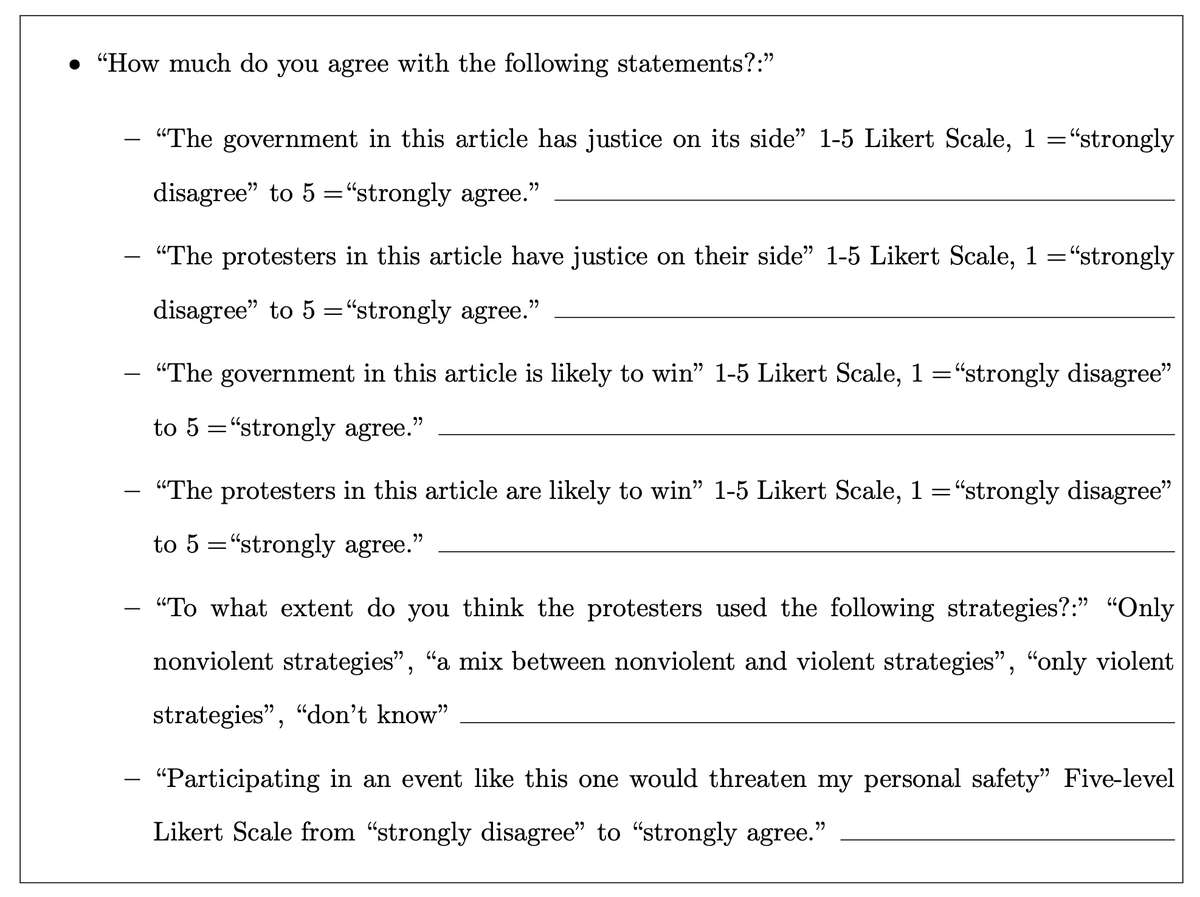
The study found “a substantial effect of nonviolent resistance on the tendency to support, support as imagined citizen, join, and donate to the movement.” Also, support “is not conditioned by expectations about potential success.” 5/ 

Government repression “is negatively associated with most indicators of protest support, including stated support, stated support as citizen and willingness to join the movement.” However, “willingness to donate increases when protest movements are reported to be repressed.” 6/
In sum, the study both substantiates a range of prior work on differential effects of nonviolent versus violent protest tactics and contributes to our understanding of the individual-level psychology that motivates broader support for social movements.
I highly recommend following the authors of the study, too:
https://twitter.com/torewig/status/1312424447282999303
For a summary of my research on 1960s civil rights protests, see:
https://twitter.com/owasow/status/1265709670892580869
Someone asked how these results from an online survey experiment might map to the real world. For an excellent example of how protest tactics influence popular support, I recommend the paper ”If a fight starts, watch the crowd.” Brief summary, here:
https://twitter.com/owasow/status/1298652413126160386
Survey experiment on protest tactics and repression finds “Women appear to be much more swayed by nonviolent resistance than men. The average treatment effect for women is almost double that for men across most measures.” researchgate.net/publication/34… 

• • •
Missing some Tweet in this thread? You can try to
force a refresh










